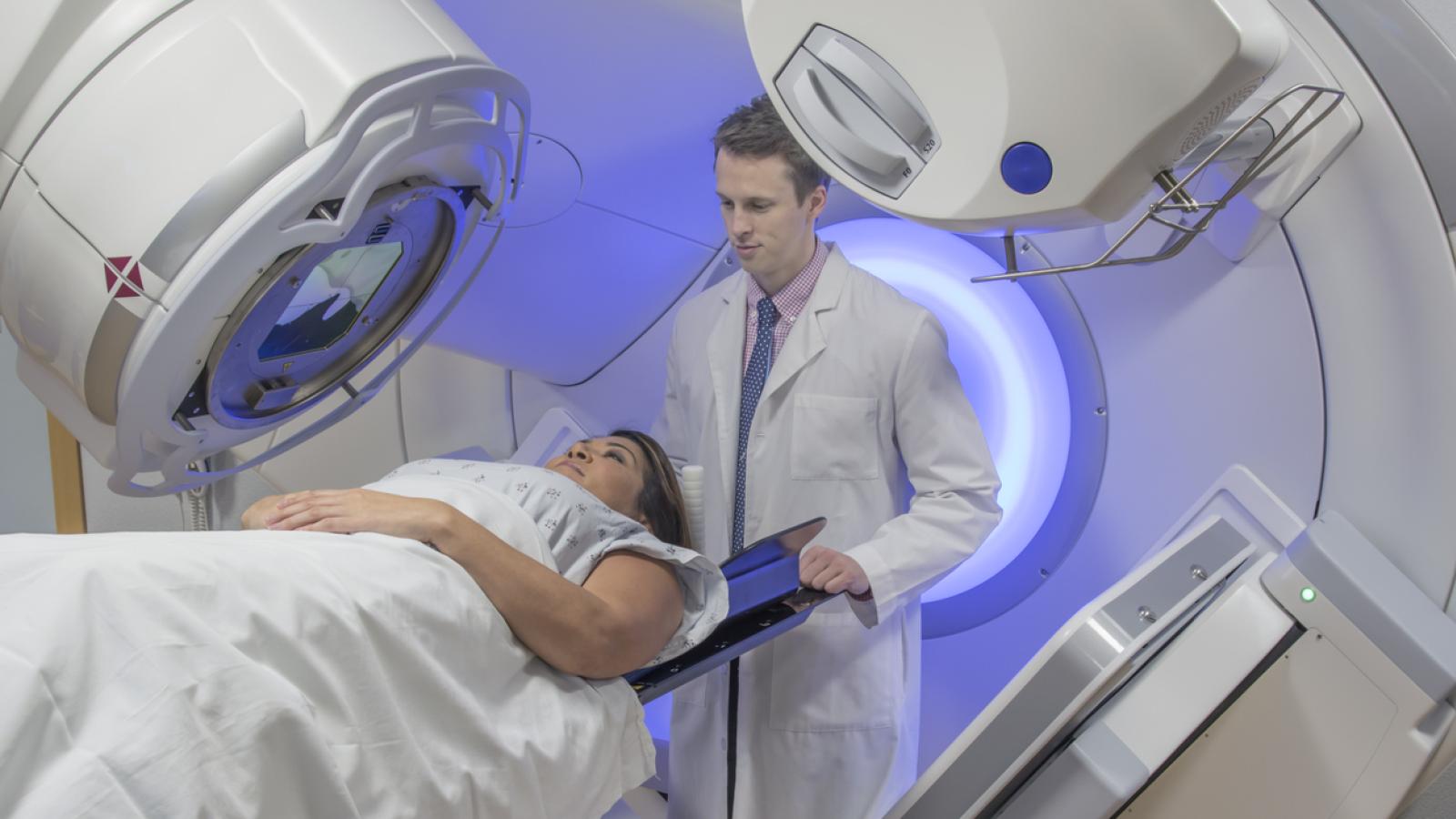Internal radiotherapy (brachytherapy) for head and neck cancers

Internal radiotherapy
Internal radiotherapy is also known as brachytherapy. The radiation source (implant) is placed inside your body on or near your tumour. Often it’s left in place for several days. It will release radiation and kill the cancer cells. The implant is usually put in to your body under general anaesthetic through soft tubes called catheters, which are placed in the tumour.
Wires that are not radioactive are also placed in the tubes. These help to keep the tubes open and allow them to be seen on an X-ray afterwards. Once your treatment dose is decided, you will be taken to the radiotherapy treatment room where the tubes will be attached to the radiotherapy machine.
Normally during treatment you can sit comfortably in a chair. You will receive treatment twice a day, once in the morning and once in the evening. This will happen for 2 to 5 days, depending on the amount of treatment your doctor has prescribed.
The radiation therapist can explain the treatment to you in detail. All the staff will leave the room while the radiation is given. They will monitor you closely during the treatment by video camera and intercom.
When you have received all of your internal radiotherapy, the tubes will be removed in the radiotherapy unit or ward. You may need painkillers for a couple of days and a small dressing on the area where the tube was.
Side-effects of internal radiotherapy to the head and neck area
The side-effects of internal radiotherapy are similar to the side-effects of external radiotherapy.
- Mouth and taste changes: Sore mouth and throat, difficulty swallowing, dry mouth and throat, thick sticky saliva (mucus), mouth infection, loss of taste or taste changes, Mouth stiffness (and reduced mouth/jaw opening)
- Voice changes: A change in your voice or losing your voice for a time.
- Skin changes
- Tiredness (fatigue)
- Hair loss: In the treated area, e.g. beard or moustache, not normally head hair
- Breathing problems
- Difficulty with eating and drinking and weight loss
If you get any side-effects, they usually develop during or shortly after your treatment and get better within a few weeks. These are called short-term or acute side-effects. It’s also possible to get late side-effects, which develop some time after treatment. Some side-effects last for a long time or may even be permanent, but it is rare to have long-term problems.
Read more about radiotherapy side-effects.
For more information
Phone
1800 200 700


